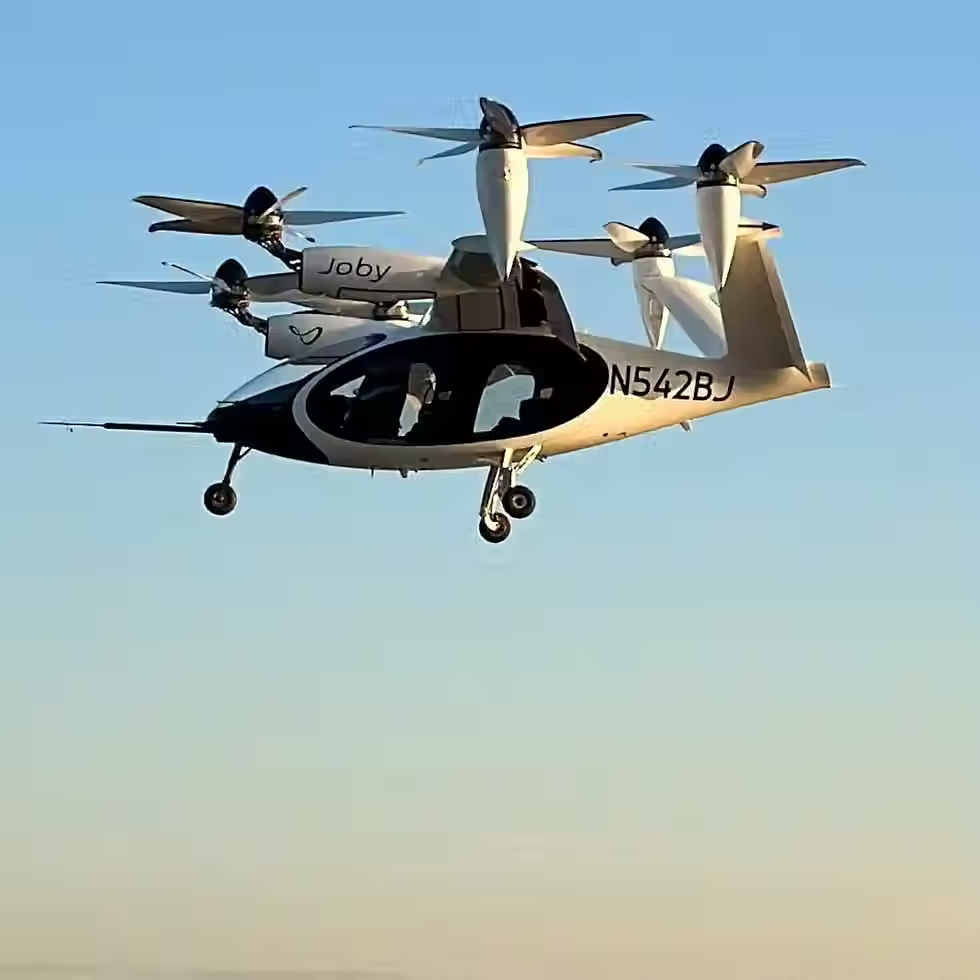Air Taxis, AI, and the Future of Piloting: Why Humans Still Matter
- icarussmith20
- Sep 19
- 4 min read
Earlier this month, the Federal Aviation Administration announced a pilot program to speed up the rollout of electric air taxis, partnering with Joby and Archer to test limited operations before full certification. The move was billed as a leap forward for innovation. But behind the glossy renderings and tech demos lies a more fundamental question for USTN readers. In a future of automation and artificial intelligence, what role will human pilots still play?
The pitch for air taxis is clear: quiet, battery-powered aircraft that whisk commuters over gridlocked highways in minutes. For the economics to work, though, operators cannot put one highly trained pilot in every four-passenger cabin. Investors and manufacturers have been blunt about it: the endgame is remote piloting or full autonomy.
But aviation history, and the current state of commercial flying, suggest the pilot’s role is far from finished.
It Takes Two to Tango
Airlines around the world face a pilot shortage, worsened by post-pandemic retirements and booming travel demand. The International Air Transport Association has even proposed raising the mandatory pilot retirement age from 65 to 67 to keep cockpits staffed.
Meanwhile, efforts to reduce cockpit crews keep hitting turbulence. The European Union Aviation Safety Agency recently shelved a plan to allow long-haul flights with just one pilot at cruise, concluding that current technology cannot match the safety provided by two.
If commercial jets, with decades of autopilot reliability, still require two humans upfront, it is a stretch to imagine regulators approving pilotless air taxis in the near future.

No One Wants a Clanker
Commercial aviation has offered plenty of reminders. In August, severe turbulence on a Delta flight from Milan to Atlanta injured 18 passengers and crew, some seriously. Pilots, not algorithms, made the decisions that prevented chaos from turning into catastrophe.
Air taxis will face even more unpredictable conditions: low altitudes, congested city skies, limited battery reserves, and fast-changing weather. Algorithms are great at solving problems they have been programmed to expect. Pilots are great at solving the ones that no one saw coming.
And then there is public trust. Most travelers are comforted by the sight of two seasoned aviators in the cockpit, some are still nervous. How many will feel safe about a driverless drone hovering over a dense cityscape?
First MAit
That doesn’t mean AI is useless. Developers are already rolling out systems that predict turbulence, monitor pilot workload, and optimize routes. Think of it as the next generation of autopilot. Useful? Absolutely. Infallible? Not yet.
The most likely path forward is a layered one, where AI handles routine flying, but humans keep the authority to intervene. It is the same philosophy that guides airline cockpits today, where computers fly most of the time but pilots remain the final safeguard.
Alexa, Land my Car
The future may not remove pilots, but it will certainly reshape their role. But how?
Scenario 1: Remote fleet oversight. Instead of one pilot per aircraft, a single qualified pilot sits in a ground control center, watching multiple (electric vertical takeoff and landing) eVTOLs via live telemetry: altitude, speed, battery, weather all up on the dash. If one aircraft runs into trouble, the pilot can step in remotely while the rest keep flying. Militaries already run drones this way, and the model could transfer to urban aviation.
Scenario 2: Onboard supervision. In piloted eVTOLs, the person in the seat may spend less time gripping the controls and more time watching AI-driven systems. The AI handles navigation and collision avoidance, while the human watches for errors and takes over if needed. Modern Teslas work in a similar way.
Scenario 3: Hybrid layers. Early deployments may include AI at the core, remote pilots as backup, and onboard pilots for reassurance. Over time, as trust builds, one or more of those layers could fade. For now, though, regulators and insurers like redundancy, and redundancy usually means people.
In all these scenarios, the pilot shifts from operator to safety net. For pilots, it’s less Top Gun and more watchdog, but this is likely the reality of modern flying.
A Whole New World
If that sounds familiar, it should. Airline pilots have already seen their jobs evolve from manual flying to managing complex avionics. Training now emphasizes systems thinking, risk management, and decision-making under stress. For eVTOL pilots, the focus will tilt even further toward overseeing software and spotting anomalies.
But that doesn’t diminish the need for humans. In fact, the early years of eVTOL service may require more vigilance than ever, as technology proves itself in crowded urban environments.
The Bigger Question
The air taxi debate is not just technical; it is cultural. Aviation has always been built on a social contract: passengers entrust their lives to trained professionals whose judgment has been tempered by thousands of hours in the air. Handing that responsibility to algorithms and remote operators represents a leap of faith that regulators, insurers, and most importantly, the public are not yet ready to take.
As air taxis inch closer to reality, pilots will remain central, not only for safety but for legitimacy. Investors may see autonomy as the endgame, but regulators and the public know that aviation progresses cautiously, on a foundation of proven reliability. And so far, nothing has proven more reliable than people in the cockpit.
Air taxis will fly. AI will help. But the future of urban aviation will still need pilots, not as relics of the past but as the human backbone of a system too complex, too risky, and too vital to entrust entirely to machines. Not because machines can’t fly, but because trust can’t be automated.





Comments